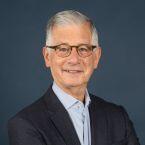- September 6, 2022
- City Administration
Following yet another contentious redistricting cycle, city, county, state, and federal legislative maps have been redrawn across the United States. Stories of court battles, political maneuvering, power grabs, and downright chaos over redistricting and gerrymandering continue to fill the headlines. While these fights carry on, many Americans stand disconnected from the process, watching with great uncertainty and fear as politicians, advocates, and special interest groups battle to gain control over legislative boundaries for the next ten years.
With trust in government already at historic lows, these political battles are poised to do more damage to the relationship between Americans and their government. Particularly at risk is the relationship with disadvantaged groups and communities of color that have historically been, and continue to be, negatively impacted by redistricting.
Amid the turmoil, the LA County Citizen Redistricting Commission (CRC) stands out as a positive example of how local governments can build trust with disengaged residents by reimagining traditional public engagement methods and going to great lengths to reach out to and build relationships with constituents.
Public engagement integral to LA County redistricting plans
The primary goal of the LA County CRC was to take control of redistricting out of the hands of politicians and place it firmly in the hands of residents. However, the creation of the citizens commission was only half of the equation. The other half was extensive public engagement and community outreach, getting residents across the county to participate in the process of defining their communities.
To get the public involved at the peak of COVID-19, Executive Director of the LA County CRC Gayla Kraetsch-Hartsough knew she had to think creatively. “Public engagement should not be a ‘check-the-box’ activity in local government, but that is unfortunately how engagement is often treated,” she said. In leading this effort, the LA County CRC Commissioners made it their mission to make public engagement an integral component of their efforts albeit in a novel, hybrid way.
Kraetsch-Hartsough and her team at KH Consulting Group had to get creative and use various tools at their disposal to ensure any county resident that wanted to get involved could make their voices heard. The team set up emails, newsletters, online community chat boards, social media pages, and other digital channels to post messages, advertise public meetings, and gather comments and feedback from residents. Residents were also given access to cloud-based Geographic Information System (GIS) software to submit map proposals for new district boundaries. The team even developed extensive training materials in multiple languages and held software training sessions in English and Spanish.
They also created a YouTube channel to live broadcast public meetings and post recordings of the sessions. The Commission also partnered with local community colleges and public libraries to host five of the public hearings as hybrid meetings so that residents could tune in from anywhere, and so Commissioners could interact with virtual and physical attendees in real-time. This approach eliminated the need for residents to travel to meetings, take time off from work, or leave behind their family obligations to make their voices heard, breaking down a major systemic barrier that has historically prevented many county residents from getting involved in public affairs. “We went to great lengths to ensure our meetings were accessible to all LA County residents,” said Kraetsch-Hartsough.
“I think that public engagement moving forward has to be hybrid,” she continued. “The wonderful thing about hybrid is that those who can and want to come in person can do so, and those who don't want to or cannot drive can still attend virtually.” For governments looking to adapt this hybrid approach moving forward, she went on to note that government leaders must develop a whole new set of skills to manage and execute public meetings and that local leaders must be prepared to review and analyze hundreds or even thousands of comments. “I think it's a whole new way of doing government,” she said, “but this approach is critical if we want to truly engage with our constituents and leverage their input.”
Leveraging partnerships to connect with historically disengaged and marginalized communities
Enabling hybrid meetings was a critical first step in increasing access for residents that want to get involved in redistricting. However, the Commissioners understood that scheduling meetings would not lead to an increase in engagement without establishing trusting relationships. To connect with these groups early in the redistricting process, the Commission built relationships with dozens of nonprofit organizations and community groups across the county to help conduct outreach. Groups involved in the effort included the League of Women Voters, Common Cause, ACLU, and The People’s Bloc, a coalition of more than 20 community organizations representing every ethnic group in LA County.
By leveraging these partnerships early, the Commission was able to create an experience that was more welcoming to marginalized communities. For example, thanks to early feedback from some Latino groups, the Commission decided to host a public meeting in Spanish and have English interpreters, rather than the other way around. With five of the 14 Commissioners being bilingual, they were able to create a PowerPoint and present to the community in Spanish. “This speaks volumes when trying to gain the trust of constituents and be inclusive of a community with such a large Hispanic population,” said Kraetsch-Hartsough.
Additionally, to increase virtual turnout from residents with limited or no internet access, some of the LA County CRC’s partners found creative ways to bridge the digital divide. In one instance, The People’s Bloc organized a potluck at a local community center and set up a laptop so members of the community could line up and give testimony remotely. “These are engagement methods that we likely never would have thought to do in the past,” said Kraetsch-Hartsough, “and without these community groups being involved, I am not sure we would have been able to replicate that successfully on our own.”
Keys to success for the LA County CRC
Throughout the 2021 redistricting process, the Commissioners (who went unpaid for their time and efforts) held a total of 56 regular and special meetings, including 16 public meetings and dozens of workshops. Altogether, the Commissioners listened to and recorded hundreds of oral testimonies and read through thousands of written comments, letters, and emails from residents. Members of the public also submitted 113 map proposals for consideration by the Commissioners when redrawing district lines.
The Commissioners were most proud of the fact that they were able to increase engagement from historically marginalized and disengaged residents who never felt like they had a voice in the past. “Many of the communities we heard from were communities who have felt disenfranchised...who felt like they have never been heard from before,” said Kraetsch-Hartsough, “Not only registered voters but noncitizen immigrants who came forward to present their needs and helped us shape the future of the county.”
Kraetsch-Hartsough outlined a few keys to success in improving engagement with marginalized and disengaged communities:
- Ensure engagement is a two-way conversation. “Government agencies need to realize that public engagement is not one way communication,” she said. “Residents will only get involved when they feel like they are being listened to and that their input is being taken seriously.” She went on to note that public meetings should be more interactive and conversational, even when virtual or hybrid.
- Be transparent about anything and everything. “The most important thing throughout this process was to keep sharing information with the public,” said Kraetsch-Hartsough, “By being so open about the process, people trusted us. They could see what we were doing.” Sharing progress via different social platforms, the YouTube channel, and online message boards meant that residents could easily catch up on the redistricting work.
- Take the time to educate residents about the impacts. In LA County, millions of residents needed to access county services for the first time during COVID-19, which really opened people’s eyes to the importance of county government and the importance of accessing and enrolling in services virtually. “More people came out to our meetings because they had a better understanding of the role county government plays in their lives,” said Kraetsch-Hartsough, “A lot of the minority and historically disadvantaged communities also came out because they now understood the importance of voting and making sure their votes counted.”
The role of public engagement in building trust
Kraetsch-Hartsough believes that active public engagement that meets residents where they are, including in-person and virtually, is crucial for rebuilding trust in local government. “People have lost trust in government because they feel they have been kept in the dark about the decisions that impact their lives,” she said, “They no longer feel that they have agency when it comes to the decisions being made in their neighborhoods.”
To turn things around, she believes that government leaders must reimagine how they engage with the public and communicate their vision to residents, with the assistance of digital tools (like the GIS mapping software) and more accessible engagement (like the hybrid, virtual, and bilingual meetings). “We must start by listening to residents about their concerns, as well as their hopes and dreams for their communities. We must then take their input and paint the picture for them,” she explained, “Visualizing the future with residents’ input as a core component is crucial if we hope to win back the trust of our constituents.”



 Stephen Goldsmith is the Derek Bok Professor of the Practice of Urban Policy at the Harvard Kennedy School and the
Stephen Goldsmith is the Derek Bok Professor of the Practice of Urban Policy at the Harvard Kennedy School and the 

